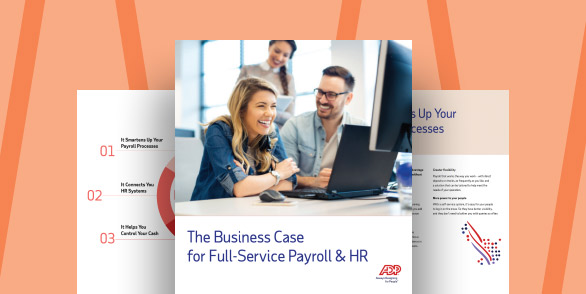A human resources business partner, or HRBP, is an HR professional who can handle everything from hiring and benefits to compliance and employee relations. Some employers hire a dedicated HRBP within their HR department for such purposes, while others choose to partner with a professional employer organization (PEO).
Table of Contents
What does an HR business partner do?
HR business partners direct their clients on how to best reduce employment-related risks. Their guidance covers the full range of HR issues that can happen on any given day – employee conflicts, compliance questions, worker classifications, HR policy and more. HRBPs also perform some tasks on behalf of their client, such as training employees or evaluating benefits packages, which can alleviate administrative burdens.
What is the HRBP meaning of strategy?
Sometimes employers know that a correction is needed, but they’re not entirely sure where the underlying problem lies. That’s where the strategic support of HRBPs can be incredibly valuable. For instance, they may analyze data and use benchmarking to assess whether compensation and health benefits are competitive for the target market. Some HRBPs even have industry-specific knowledge and can help their clients create strategic plans.
What does an HRBP do that makes for a great business partner?
When an incident occurs that could pose compliance risks, employers can’t wait for a lengthy response from their HRBP. Those who succeed in this role understand that the most important thing to their clients is reliable communication and having someone they can count on for timely assistance when it’s needed. Some might even call it “at your fingertips compliance management.”
Building strategic relationships as an HRBP
Engaging with clients on a regular basis is an important part of being an HRBP, but the cadence of those interactions largely depends on the individual business and its needs. For employers who want assistance with HR strategy or responsibilities that occur infrequently, such as training or open enrollment, quarterly check-ins may be appropriate. Other employers that struggle with the day-to-day operations that keep their business moving might require weekly contact with their HRBP.
HRBP responsibilities
The HR business partner job description includes many responsibilities, but generally HRBPs provide guidance on any of the following HR functions:
- Payroll and tax administration
- Employee handbook and policy development
- Benefit plan selection, enrollment and administration
- Compliance management
- Employee and team relations
- Training and career development
- Performance management
- Recruiting and onboarding
- Employee retention and turnover
- Workplace culture
Skills of an HRBP
HRBPs are professional communicators who know HR policy and can help businesses find the root cause of employee challenges, such as turnover. They usually have a degree in human resources or one of the following certifications:
- Professional in human resources (PHR)
- Senior professional in human resources (SPHR)
- Society for Human Resource Management certified professional (SHRM-CP)
- Society for Human Resource Management senior certified professional (SHRM-SCP)
In addition, HRBPs have extensive HR experience, which they gain by working in several industries and with companies that operate across multiple states. This gives them a well-rounded perspective of how to guide clients no matter what situation comes their way.
What is HRBP vs HR?
HRBP is a profession within the larger realm of HR. Whereas an HR manager might handle day-to-day administrative functions, the HRBP usually works directly with organizational leaders and business owners, helping them understand their employment-related challenges and offering real-world solutions.
How companies benefit from HRBPs
Employers with an HRBP enjoy peace of mind knowing that there’s someone in their corner who can help them:
- Keep pace with ever-changing federal, state and local employment regulations
- Understand the complexities of the employee lifecycle – hiring, training, compensating, promoting, etc.
- Handle difficult circumstances, such as terminations, layoffs, furloughs, workplace discrimination and harassment, and employee conflicts
What is an HR business partner model?
The HR business partner model, from the perspective of a PEO, is one in which each client company has access to an HRBP for guidance and support. These HRBPs are shared among several businesses, which allows clients to reap the benefit of professional HR expertise without bearing the cost of hiring and compensating someone on their own.
However, this HRBP model does not necessarily mean that there’s a revolving door of HR professionals. Some PEOs, like ADP TotalSource®, assign the same HRBP to a client for the length of the business relationship. This way, clients have a familiar face who knows their business challenges and policies inside and out.
This article is intended to be used as a starting point in analyzing HR business partners and is not a comprehensive resource of requirements. It offers practical information concerning the subject matter and is provided with the understanding that ADP is not rendering legal or tax advice or other professional services.




